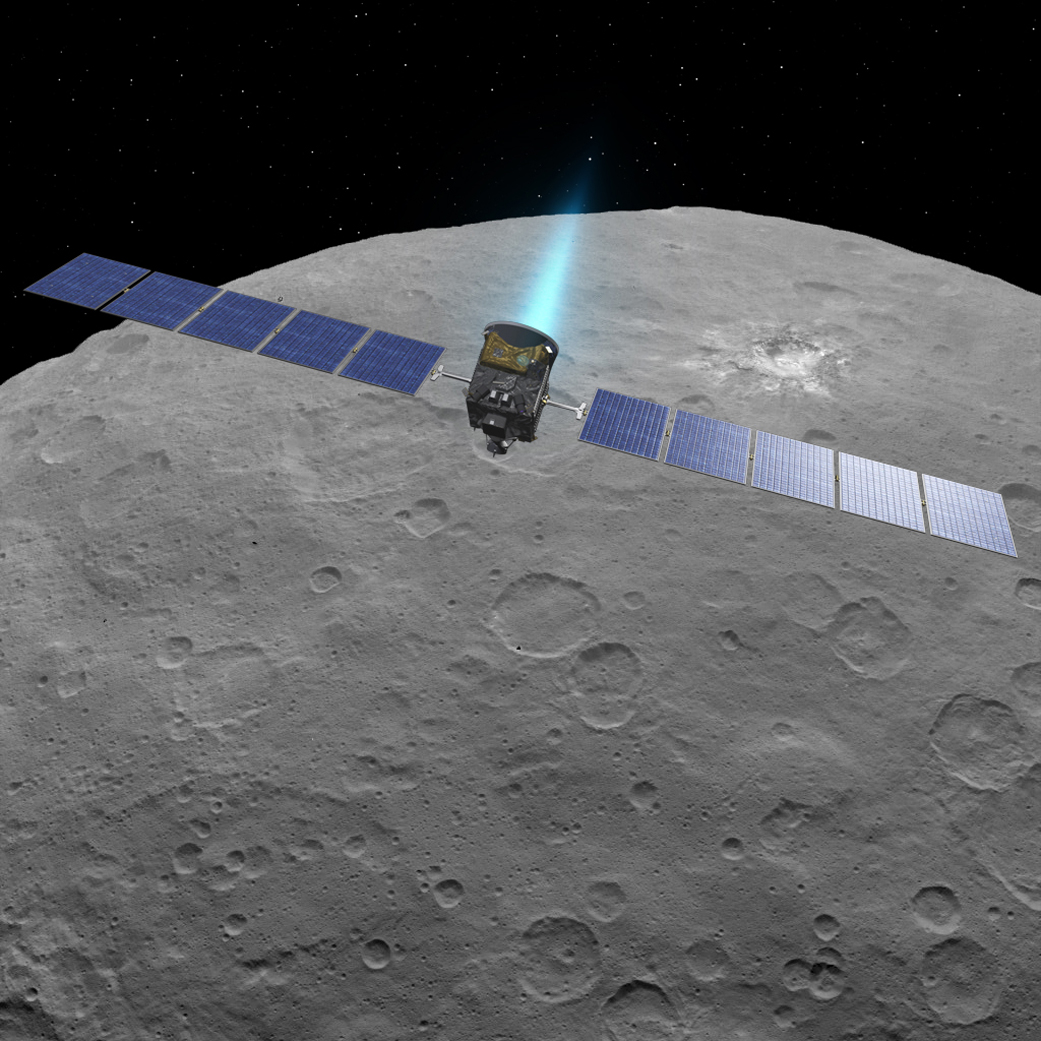
NASA's Dawn spacecraft has resumed its trek to a new orbit around the dwarf planet Ceres, more than two weeks after a glitch halted the probe in its tracks.
Dawn began spiraling down to its third Ceres science orbit on June 30 but experienced a problem almost immediately and went into a protective "safe mode." After an investigation, the mission team has now determined what happened and cleared Dawn to return to work.
"Engineers traced this anomaly to the mechanical gimbal system that swivels ion engine #3 to help control the spacecraft's orientation during ion-thrusting. Dawn has three ion engines and uses only one at a time," NASA officials wrote in an update today (July 17). [Photos of Ceres, Queen of the Asteroid Belt]
"Dawn’s engineering team switched to ion engine #2, which is mounted on a different gimbal, and conducted tests with it from July 14 to 16," the officials added. "They have confirmed that the spacecraft is ready to continue with the exploration of Ceres."
It will take Dawn about five weeks to maneuver from its second science orbit, which lies 2,700 miles (4,400 kilometers) above Ceres' surface, down to the third, which lies at an altitude of 900 miles (1,500 km), NASA officials said. (Ion engines are extremely efficient but very low-thrust, hence the long maneuver time.)
The $466 million Dawn mission launched in September 2007 to study the two largest objects in the main asteroid belt between Mars and Jupiter: the 330-mile-wide (530 km) Vesta and the roughly 590-mile-wide (950 km) Ceres.
Dawn orbited Vesta from July 2011 until September 2012. The spacecraft arrived at Ceres this past March, in the process becoming the first probe ever to orbit a dwarf planet, as well as the first to circle two celestial objects beyond the Earth-moon system.
Get the Space.com Newsletter
Breaking space news, the latest updates on rocket launches, skywatching events and more!
Vesta and Ceres are building blocks left over from the age of planet formation, so Dawn's observations should help researchers better understand how rocky worlds like Earth and Mars were put together, mission team members have said.
The spacecraft's work at Ceres has already brought that pockmarked world into much sharper focus, revealing intriguing features such as unexplained bright spots in the floors of some craters.
The third science orbit will not be Dawn's last; later in the mission, the spacecraft is scheduled to study Ceres from a distance of just 230 miles (375 km). Dawn will stay in this fourth science orbit through the end of its mission, in June 2016.
Follow Mike Wall on Twitter @michaeldwall and Google+. Follow us @Spacedotcom, Facebook or Google+. Originally published on Space.com.
Join our Space Forums to keep talking space on the latest missions, night sky and more! And if you have a news tip, correction or comment, let us know at: community@space.com.

Michael Wall is a Senior Space Writer with Space.com and joined the team in 2010. He primarily covers exoplanets, spaceflight and military space, but has been known to dabble in the space art beat. His book about the search for alien life, "Out There," was published on Nov. 13, 2018. Before becoming a science writer, Michael worked as a herpetologist and wildlife biologist. He has a Ph.D. in evolutionary biology from the University of Sydney, Australia, a bachelor's degree from the University of Arizona, and a graduate certificate in science writing from the University of California, Santa Cruz. To find out what his latest project is, you can follow Michael on Twitter.









